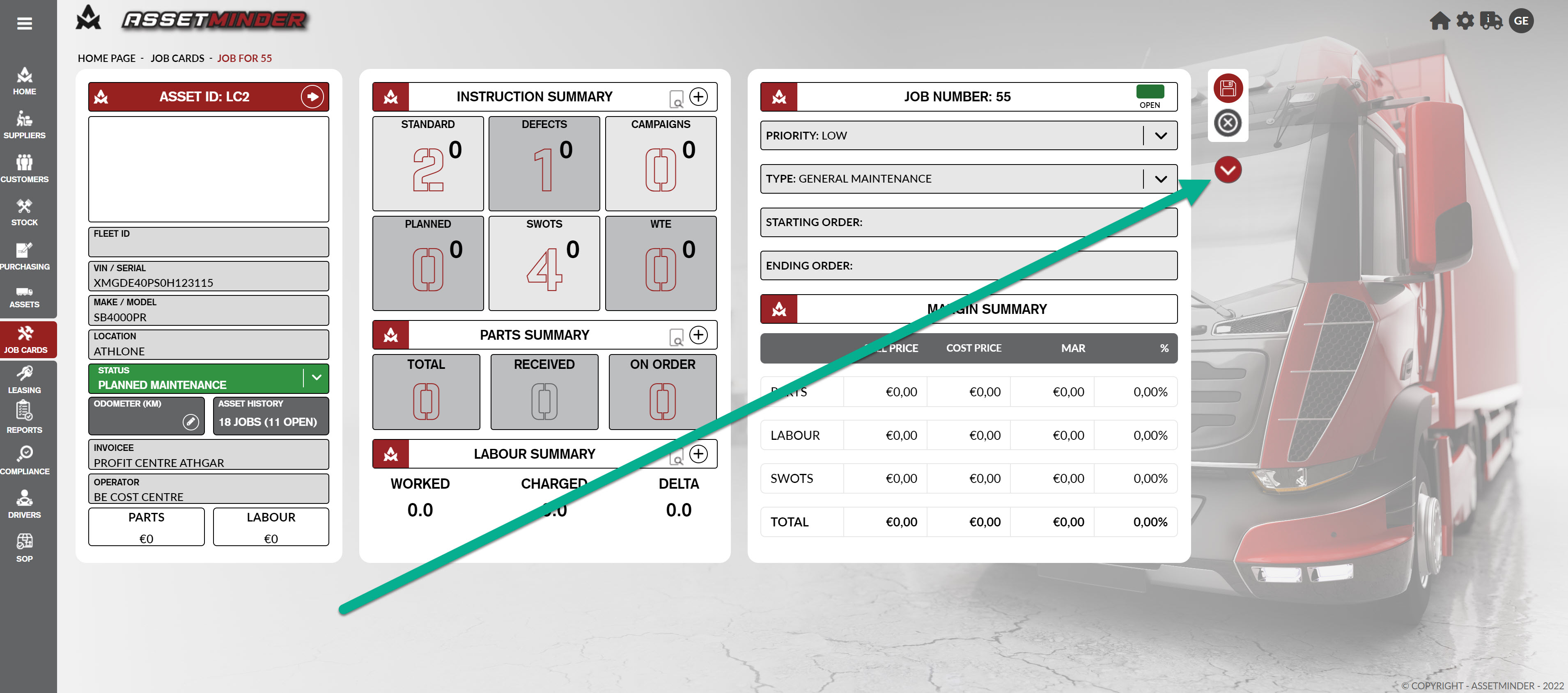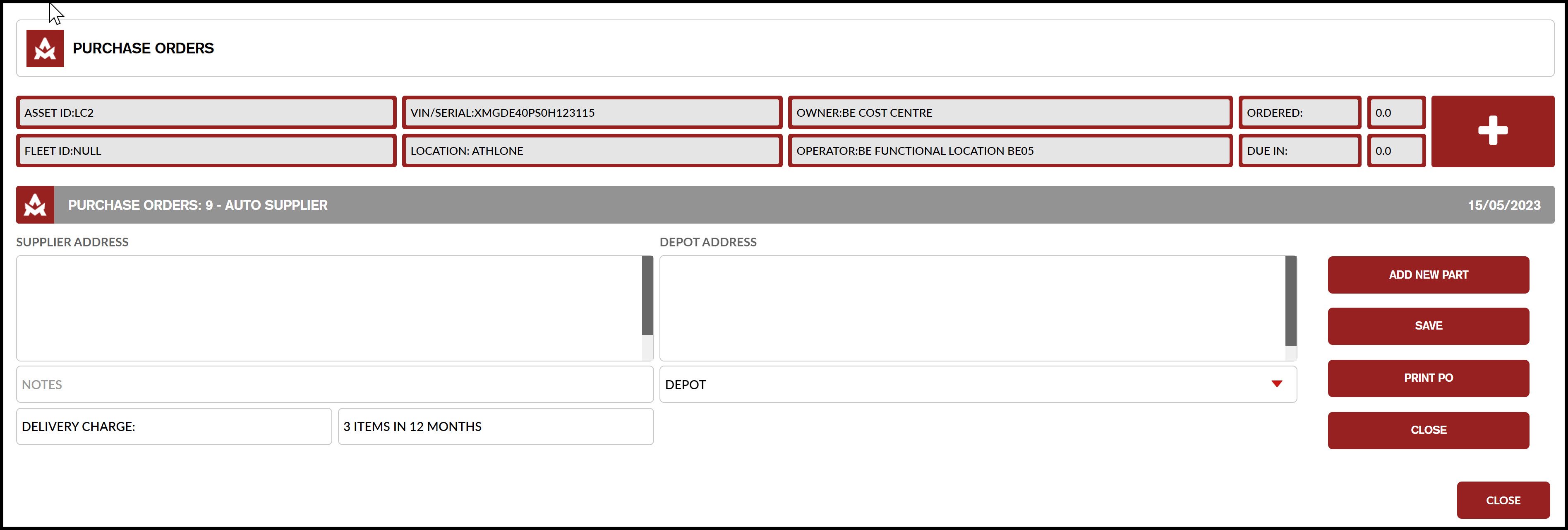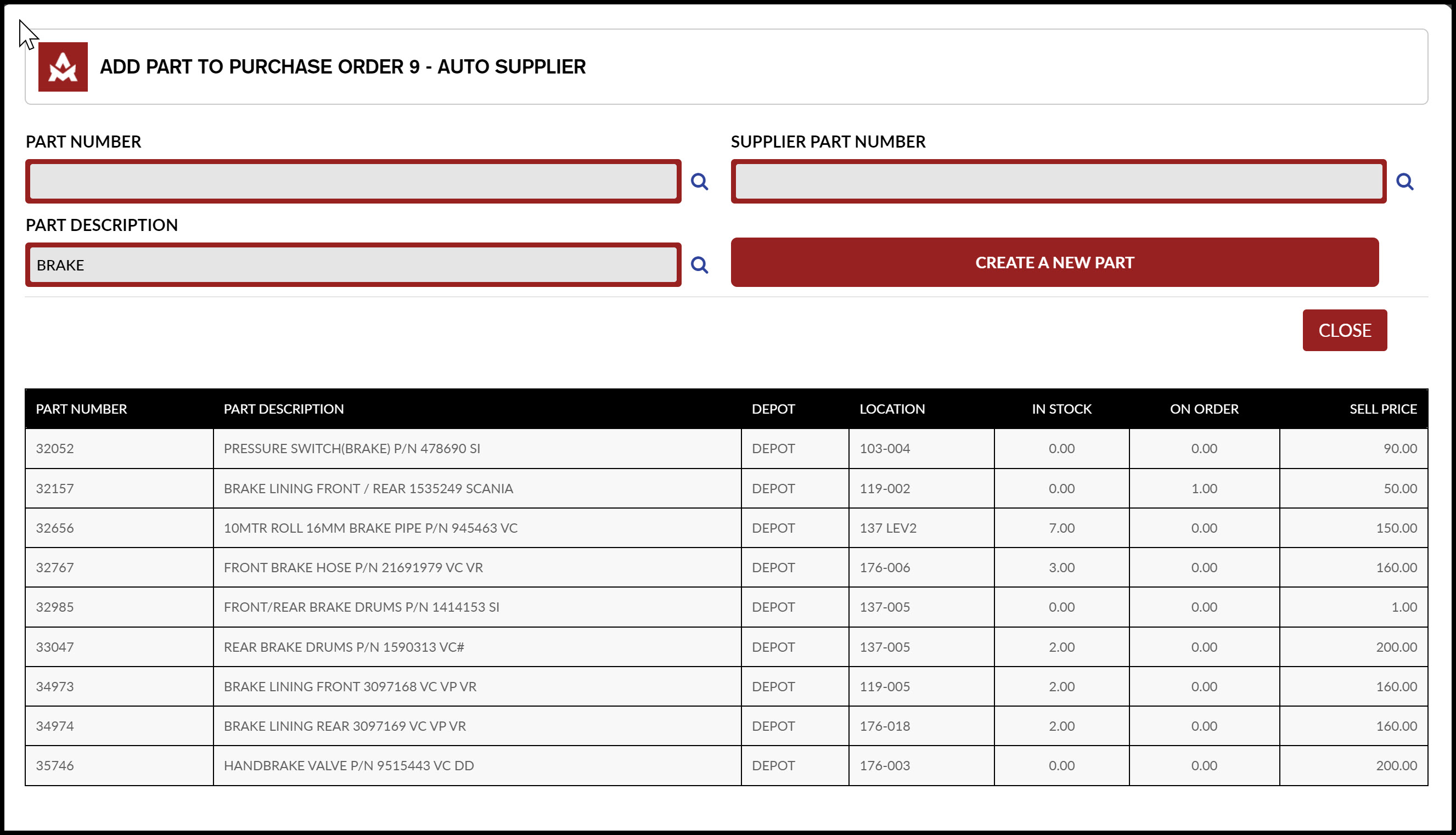Procedure
Open the job card and click on the 'OTHER ACTIONS' down arrow, as shown below.
The Purchasing functionality is indicated by the 'shopping trolley' icon as shown below. Click on this to open the purchasing page.
The purchase orders page will be shown. Any current open purchase orders associated with this job card are shown.
To ADD A PURCHASE ORDER, click on the large '+' icon.
The following dialogue box will next be shown.
The first step is to select the supplier for the intended PO. Choose the Supplier and click on CREATE PO.
A message will then be shown, asking the user to confirm their intention to create a new PO for the specified supplier (the name will be shown in the message).
The user can choose to CONFIRM or CANCEL.
Having selected CONFIRM, the Purchase Order box will be shown, as per the example below.
Next, the user will add the part (or parts) to the Purchase Order.
Select ADD NEW PART from the options on the right-hand side. The next box shown will be as follows.
The user can find the part information by either entering:
-
PART NUMBER or a partial PART NUMBER.
- For example, if the part number is '33123' and the user enters, '123' the part number and any other parts from this supplier will be shown.
- SUPPLIER PART NUMBER or partial SUPPLIER PART NUMBER.
- If the user organisation PART NUMBER is different to the number used by the supplier, and this is known to the user, then this number can be used in the search.
-
PART DESCRIPTION.
- If neither the PART NUMBER or the SUPPLIER PART NUMBER are not known, the user can enter a full or partial PART DESCRIPTION and use this term to locate the part.
After entering the search term, then click on the search icon (the magnifying glass icon) to the right of the search term line.
In the example below, the search term entered was "BRAKE" and the search returned nine matching parts from the nominated supplier.
Select the part required by clicking on the line. The next dialogue box to be shown will be as follows.
The part description detail is shown. In the QUANTITY box, enter the quantity required. The price box will shown the price when last purchased. This can be left as is, or a different price entered. Finally, if the organisation has more than one "VMU" (Vehicle Maintenance Unit") then the user can select the intended VMU from a dropdown list.
To place the order on Assetminder, the user clicks on SAVE. If the user wishes to cancel the procedure, then click on CANCEL.
ADDITIONAL INFORMATION
- Clicking on the INSPECTION icon will show the STOCK RECORD for this part.







Conor Gibson
Comments